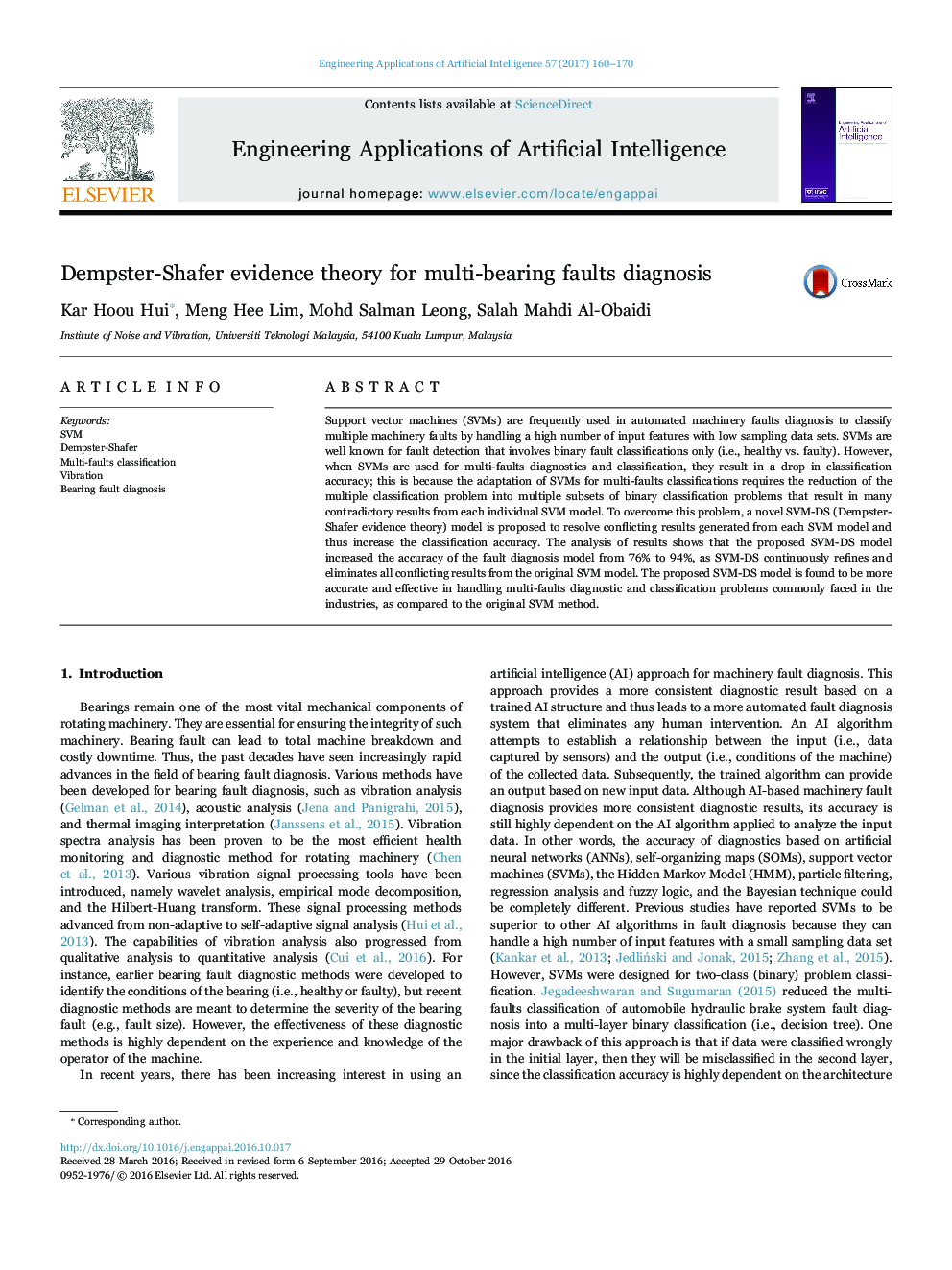| Article ID | Journal | Published Year | Pages | File Type |
|---|---|---|---|---|
| 4942775 | Engineering Applications of Artificial Intelligence | 2017 | 11 Pages |
Abstract
Support vector machines (SVMs) are frequently used in automated machinery faults diagnosis to classify multiple machinery faults by handling a high number of input features with low sampling data sets. SVMs are well known for fault detection that involves binary fault classifications only (i.e., healthy vs. faulty). However, when SVMs are used for multi-faults diagnostics and classification, they result in a drop in classification accuracy; this is because the adaptation of SVMs for multi-faults classifications requires the reduction of the multiple classification problem into multiple subsets of binary classification problems that result in many contradictory results from each individual SVM model. To overcome this problem, a novel SVM-DS (Dempster-Shafer evidence theory) model is proposed to resolve conflicting results generated from each SVM model and thus increase the classification accuracy. The analysis of results shows that the proposed SVM-DS model increased the accuracy of the fault diagnosis model from 76% to 94%, as SVM-DS continuously refines and eliminates all conflicting results from the original SVM model. The proposed SVM-DS model is found to be more accurate and effective in handling multi-faults diagnostic and classification problems commonly faced in the industries, as compared to the original SVM method.
Related Topics
Physical Sciences and Engineering
Computer Science
Artificial Intelligence
Authors
Kar Hoou Hui, Meng Hee Lim, Mohd Salman Leong, Salah Mahdi Al-Obaidi,
